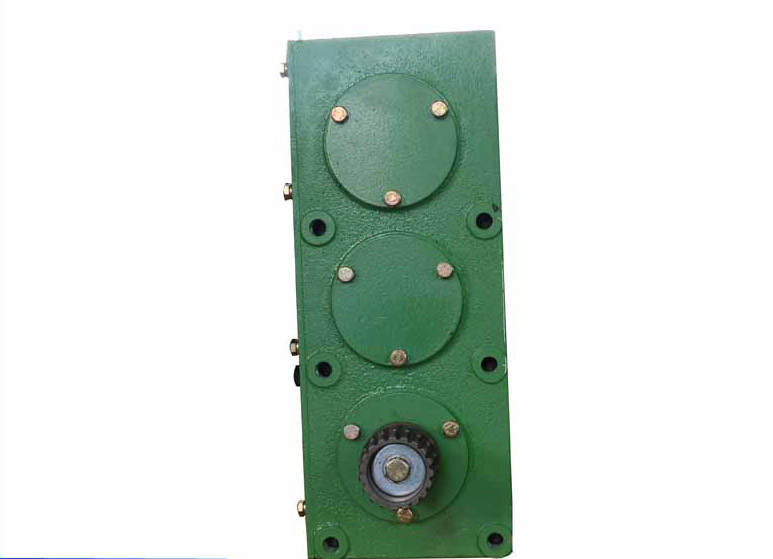commonMachining gearboxThe methods are:
1. Molding method
This milling method belongs to the forming method.When milling, the workpiece is installed on the indexing head of the milling machine, and the gear teeth are milled with a disc (or finger) milling cutter with a certain modulus.After machining one tooth gap, it is indexed, and then the next tooth gap is milled.Gear milling features: simple equipment; low tool cost; low productivity; low gear machining accuracy.The tooth profile shape of the gear depends on the size of the base circle (related to the number of teeth of the gear).The forming method of gear milling requires simple movement and does not require a special machine tool, but requires an indexing head for division, resulting in low production efficiency.This method is generally used to produce low-precision gears in small batches.
2. Generation method
Use generative methodMachining gearWhen the gear surface involute is formed by the generative method, it has high production efficiency and processing accuracy.Most gear processing machines use the generative method.
(1) Gear hobbing
The gear hobbing principle is to simulate the meshing and rolling process of a pair of helical gears with staggered axes.When the number of teeth of one of the gears is reduced to one or a few, the helix angle of the gear teeth becomes large and it becomes a worm.Then the worm is slotted and the shovel back becomes a gear hob.When the machine tool makes the hob and the workpiece rotate in strict accordance with the transmission ratio of a pair of helical cylindrical gears, the hob can continuously cut and hob gears on the workpiece.Features: a. Good adaptability; b. High productivity; c. The surface roughness of the processed tooth profile is greater than the surface roughness of the tooth profile processed; d. Mainly usedMachining spur gears, Helical gears, worm gears.
(2) Gear forming
Gear shapers are used to process cylindrical gears with internal and external meshing, especially internal gears and multi-gears that cannot be processed by gear hobbing machines.After installing the accessories, the gear shaper can also process racks, but the gear shaper cannot process worm gears.
(3) Shaving
Gear shaving is a process in which a gear shaving cutter drives the workpiece to rotate freely, simulating a pair of helical gears meshing on both sides without backlash.The gear shaving cutter is offset from the axis of the workpiece by a certain angle.Gear shaving cutters are often used in the finishing of non-quenched and tempered cylindrical gears, with high production efficiency, and are one of the most commonly used soft tooth surface finishing methods.
(4) Gear honing
Honing is a gear finishing method that hardens the tooth surface.The relative motion relationship between the honing wheel and the workpiece is the same as that of gear shaving. The difference is that the honing wheel as a tool is a plastic gear cast or hot pressed with silicon carbide abrasive and epoxy resin as a binder.
(5) Grinding teeth
The main feature of gear grinding is: high machining accuracy, generally IT4 ~ 6 can be achieved.Due to the forced meshing, not only errors can be corrected, but also gears with high surface hardness can be processed.

 Home
Home
 Page location:
Page location:
 contact address:Jianyang Industrial Concentration Zone, Jianhu County
contact address:Jianyang Industrial Concentration Zone, Jianhu County


